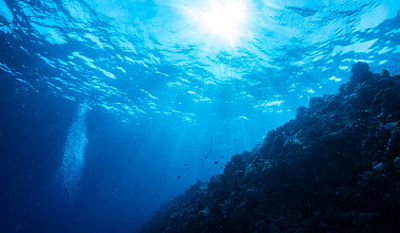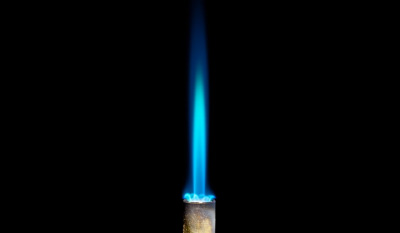Research
Carbon-Dioxide Capture and Storage
Restoration of a Sustainable Carbon Cycle
A rising level of atmospheric carbon dioxide (CO2) is of major concern for the global environment. A remedial means is to transfer CO2 into the geosphere where carbon is extracted and to convert the CO2 into hydrocarbons, the original substances. By virtue of microbial metabolic reactions, stored CO2 can be converted to CH4, which is utilized as a recycled energy source. For such a system to be established, integrated technologies, including optimized CCS, biological conversion of CO2 to CH4, and enhanced recovery of resources, are being investigated.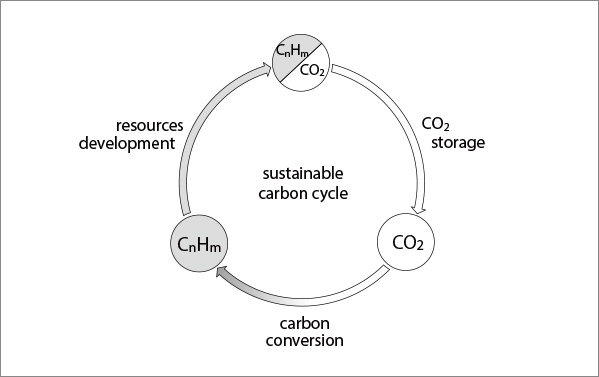
Microbial Carbon Energy Conversion Technology
One longterm focus of the program has been implementing interdisciplinary studies to create incentives for Carbon-dioxide Capture and Storage (CCS), with a particular emphasis on biotechnological system to convert CO2 into methane, the principle component of natural gas, within the CO2 geological storage reservoirs. We are currently on the way to improving electromethanogenic biocatalysts as well as to optimizing configuration of the reactor system for subsurface reservoirs in experimental and numerical investigations.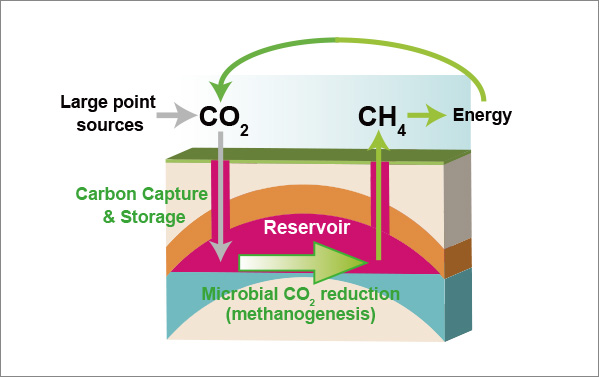
Tidal Signal Analysis for Reservoir Monitoring
The Earth is subjected to the gravitational attraction of the solar-system bodies; primarily the Moon and the Sun. Because the solid Earth is an elastic body, it undergoes elastic deformation induced by the three kinds of tidal dilatations; Earth, oceanic, and barometric. The Earth tide leads to a pore-volume change, resulting in the decrease and increase of the pore pressure respectively corresponding to the expansion and contraction of the pore volume. The ocean tide yields periodic pressure variations on the seafloor, which are transmitted through the overlying layers to the reservoir of interest. The mechanism of the barometric tidal dilatation is similar to that of the oceanic tidal dilatation in the sense that the dilatation is induced by a periodic variation of the compressive force of the overburden. The diurnal and semi-diurnal features of the pressure fluctuations can be retrieved from pressure transients due to tides and be utilized to understand the physical properties of the Earth.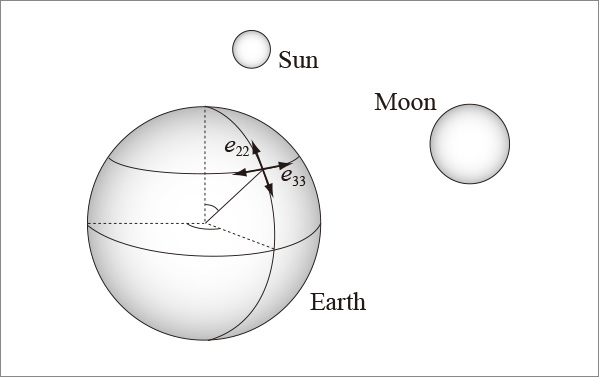
Seafloor Mineral Resources
Exploration and Development of REY-Rich Mud Deposit on Deep-Seafloor
Rare-earth elements and yttrium (REY)—crucial materials in high-technology products including hybrid motors, flat screen television, and military equipment—are almost exclusively mined and produced by China. However, the Chinese government has asserted that its REY reserves will be exhausted within 20 years, and then has significantly reduced REY exports to the West. Finding new resources, especially for heavy rare earths, is a strategic global imperative. Our research group has discovered a new mineral deposit for REY on deep-sea floor in the Pacific Ocean, named as REY-rich mud. REY stored in this type of mud deposit amount to a possible resource ~1000 times greater than all current reserves on land. In addition, the mud has distinctive advantages as a resource: easy leaching of REY by dilute acid and very low contents of radioactive Th and U, constituting a highly-promising resource for REY. We aim to resolve a genesis of the REY-rich mud, to build an efficient exploration method for the deposit, and ultimately to develop the mud deposit in the near future.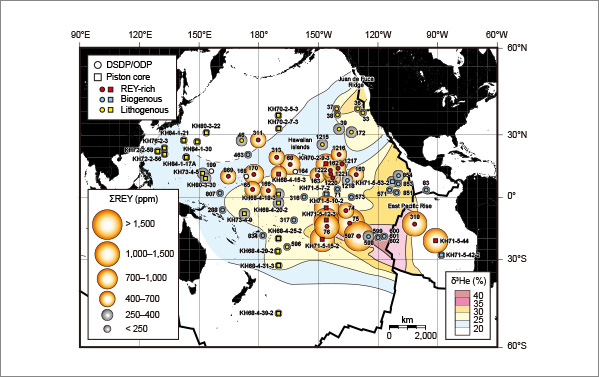 Distribution of REY-rich mud in the Pacific Ocean (Kato et al., 2011 Nature Geoscience)
Distribution of REY-rich mud in the Pacific Ocean (Kato et al., 2011 Nature Geoscience)
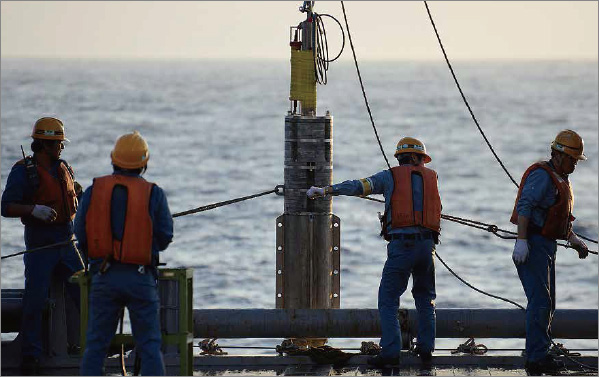
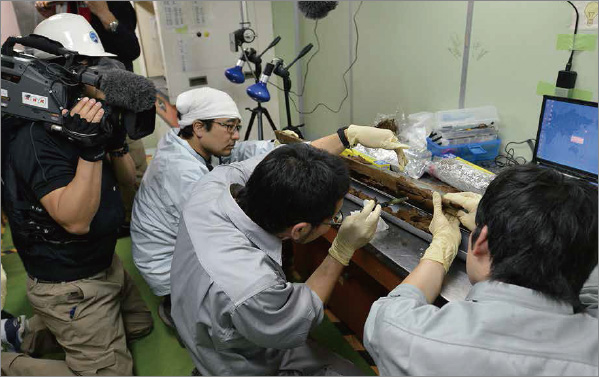
Research cruises for REY-rich mud in the Japanese exclusive economic zone
Search for a Unified View of Geosystem Evolution Based on Mineral Resources from Present and Past Oceans
The goal of our research is to obtain a unified view of the relationships between seafloor mineral deposits, global environmental changes, and geochemical cycles during the history of the Earth. In the Late Jurassic, intense mid-ocean ridge hydrothermal and volcanic activity resulted in huge sulfide deposits and large emissions of CO2 gas, leading to global warming and a stratified paleo-Pacific Ocean. A global oceanic anoxic event in the Late Jurassic brought about marine conditions and elemental behaviors completely different from those in the present-day oxygenated global ocean, resulting in the widespread deposition and preservation of voluminous sulfides, petroleum source rocks, and black shale.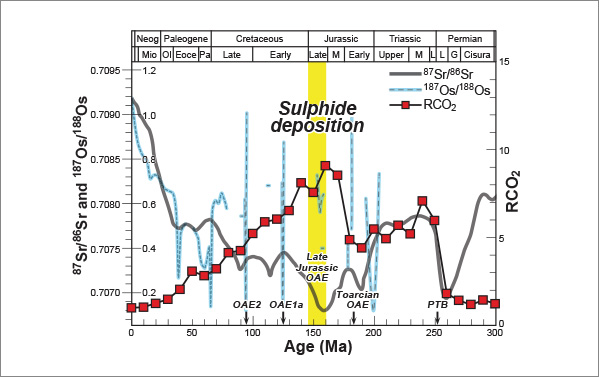 Timing of Bessi-type volcanogenic massive sulfide deposition (Nozaki, Kato & Suzuki, 2013 Scientific Reports)
Timing of Bessi-type volcanogenic massive sulfide deposition (Nozaki, Kato & Suzuki, 2013 Scientific Reports)
Research on genesis of seafloor mineral resources
Ocean occupies 70% of Earth’s surface. To efficiently explore frontier resources such as seafloor mineral resources lying in the vast ocean, theoretical approaches are absolutely essential. Scientific understanding of the origins of resources can constrain environmental conditions needed for resource generation, which provides us key insights on the promising area to develop the resources. Our goal is to elucidate the genesis of seafloor mineral resources, or extraordinary concentration of various elements in ocean, by high-precision chemical analyses, high-dimensional statistical analyses to identify key materials or processes for resource generation, and quantitative evaluation by mathematical modeling.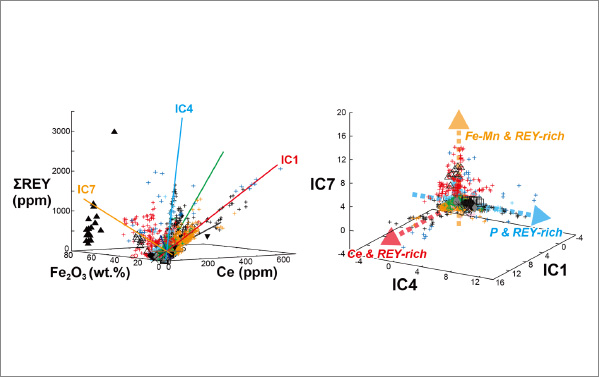 Statistical analysis of multi-element data (Yasukawa et al., 2016 Scientific Reports)
Statistical analysis of multi-element data (Yasukawa et al., 2016 Scientific Reports)
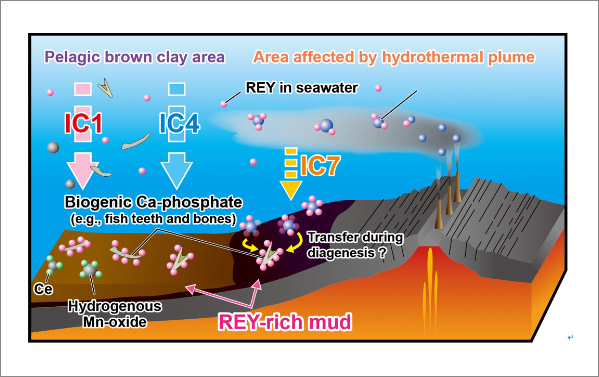 Three key components for REY-rich mud
Three key components for REY-rich mud
Oil and Gas/Geothermal
Subsurface Exploration Technology
Energy Return on Investment (EROI)
Energy “quality” is an important factor determining the quality of our society. The degradation of energy quality is an essentially important issue in maintaining our society. One way to mathematically express the energy quality is the EROI (Energy Return on Investment), which is defined as the ratio between the quantity of energy delivered to society by an energy system and the quantity of energy used directly and indirectly in that process. The estimation of EROI can provide useful insights for examining the advantages and disadvantages of different fuels in the energy production process. Nowadays, humans largely depend on oil which is a significant contributor to transportation and is a finite resource. Many of the world’s remaining oil potential are located in challenging regions, such as the Arctic or in deep waters. It is important to estimate how EROI decreases and how the decreasing EROI affects our society.

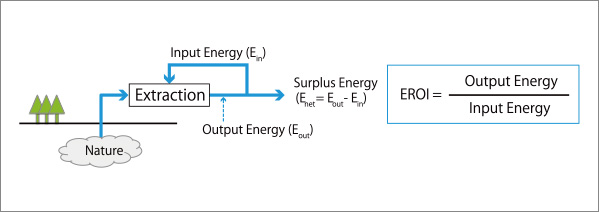
Seismic Exploration Using Attenuation
Seismic attenuation which controls both the amplitude decay of seismic waves and the accompanying frequency change is a signature of the wave-rock interaction. Recent advances in seismic methods allow both compressional and shear wave attenuation to be measured. By using various seismic data such as sonic, VSP, surface seismic data we examine the frequency-dependent seismic attenuation. We also attempt experimental investigations have been done by conducting ultrasonic wave transmission measurements on ice-brine coexisting system in order to examine the influence of unfrozen brine in the pore microstructure on ultrasonic waves. On the other hand, for a more detailed understanding of the rock physical mechanism responsible for these attenuation phenomena, we try theoretical approach.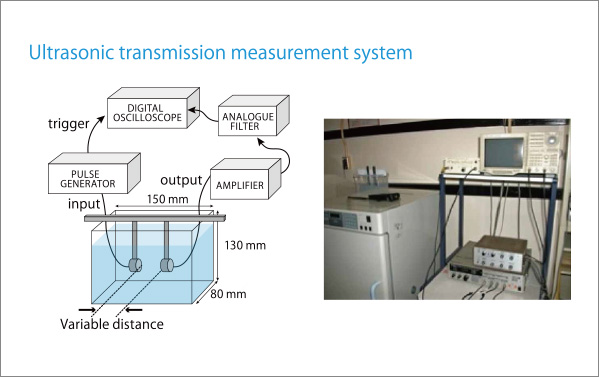
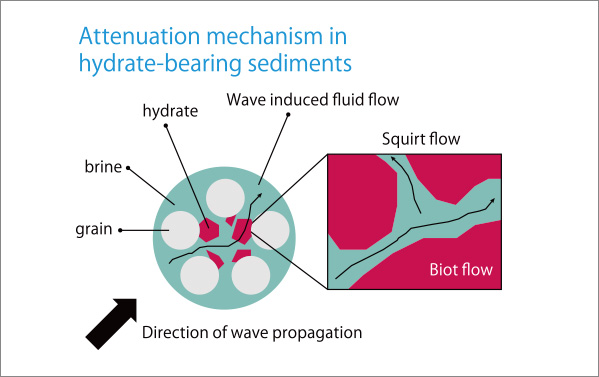
Formation Evaluation and Production Technology
Decision Analysis under Uncertainty in Energy Resource Development
Due to the remoteness and broadness of underground reservoirs, direct and accurate reservoir characterization is difficult, if not impossible, and evaluation outcomes usually suffer from some degree of uncertainty. For proper management of resource development, rational decisions need to be made under uncertainties, which require adequate information-gathering activities. A comprehensive decision analysis in resource development is under investigation through the concept of value of information (VOI).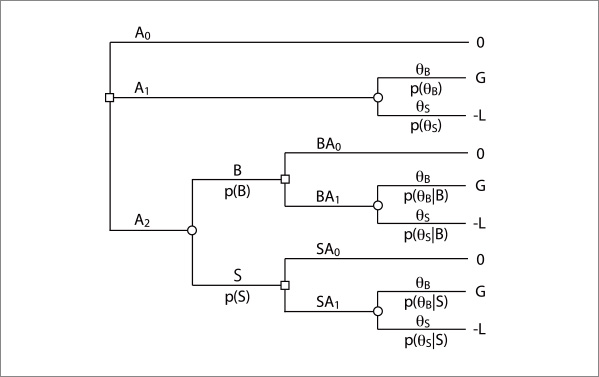
Integrated Flow Simulation for Unconventional Resources
There is no single numerical scheme that can properly handle a variety of flow problems. It is important to select the scheme suitable for the object scale, geometry and property. Furthermore, it is important to study various aspects of flow behavior by use of different schemes in an interconnected manner. From such a viewpoint, an integrated simulation technology, including FDM, CVBEM, LBM, CIP and MD, is studied for further understanding of fluid behavior.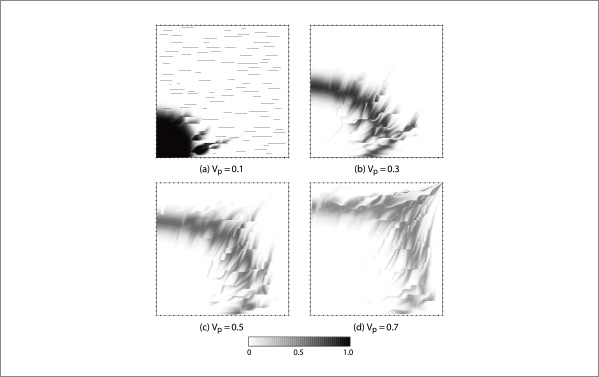
Project Based Improved Recovery Technology
Due to the urgency of the world energy demand, there is a pressing need to develop not only conventional but also unconventional energy resources such as shale oil and gas. At the same time, however, there is a growing concern about the increase of environmental disturbance associated with human activity for exploiting unconventional reserves. To optimize operational activities at various stages on energy resources development projects, which ranges from information gathering to development and even production, we aim at establishing novel methodologies to attain improved recovery factor while managing environmental disturbance properly. Our future achievements are expected to help the long-term stability of domestic energy supply.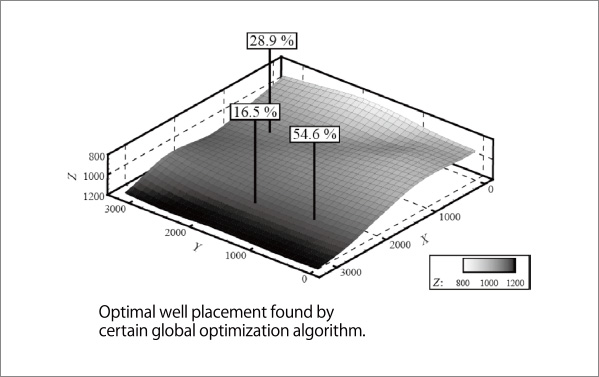
Methane Gas Hydrate
Study on Methane Hydrate Resources toward Commercial Gas Production
Natural methane hydrates distributed under seabed in offshore Japan are expected to be a future domestic energy resource for strengthening our energy security. Dr. Masuda has been conducting challenging research toward commercial production from methane hydrates as a project leader of the MH21 Research Consortium (Research Consortium for Methane Hydrate Resources in Japan). Our laboratory research themes include the development of reservoir simulator to predict gas production behavior from methane hydrates, the evaluation of gas recovery methods such as depressurization and thermal recovery, and economics of oceanic methane hydrate development.
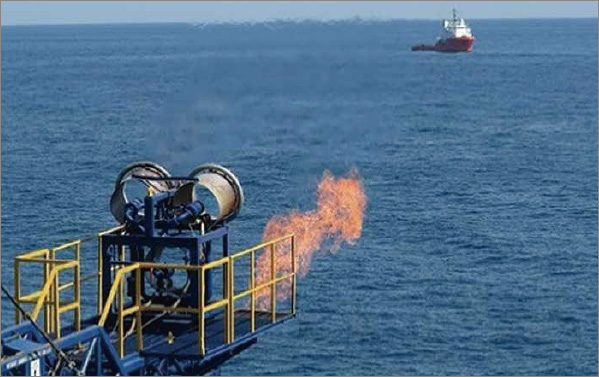 World’s first gas production test from offshore methane hydrates
World’s first gas production test from offshore methane hydrates
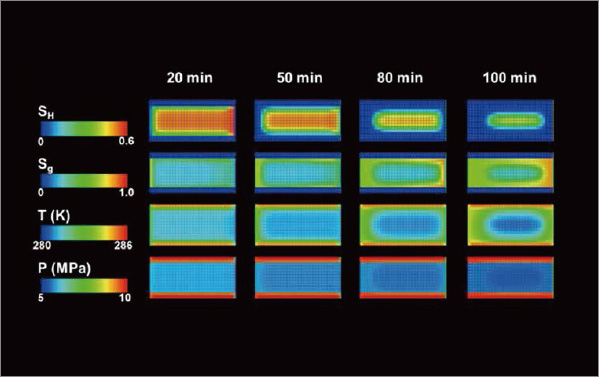 Numerical simulation of hydrate dissociation in a porous medium
Numerical simulation of hydrate dissociation in a porous medium
Study on New Gas Recovery Process
Carbon dioxide (CO2) injection method has been of current interest as an alternative application for gas recovery from methane hydrate reservoirs. Since CO2 hydrate is thermodynamically more stable than methane hydrate, CO2 can replace methane (CH4) molecules in hydrate when it is exposed to methane hydrate in a porous medium. This seems to be an attractive method to sequester CO2 into methane hydrate sediments during methane gas recovery, but a major challenge is how to inject CO2 continuously without blocking the pore of sediment. For solving this problem, we have been doing research to establish new CO2 injection processes called N2-CO2 gas mixture injection and CO2-in-water (C/W) emulsion injection. Our approaches are numerical simulations that consider heat and mass transfer and phase behavior in porous media and laboratory experiments.
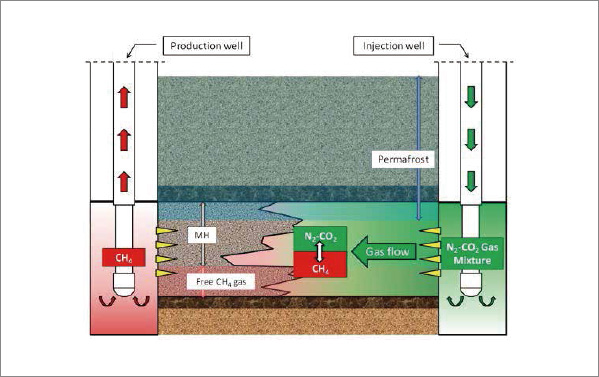 Concept of N2-CO2 gas mixture injection into methane hydrate reservoir
Concept of N2-CO2 gas mixture injection into methane hydrate reservoir
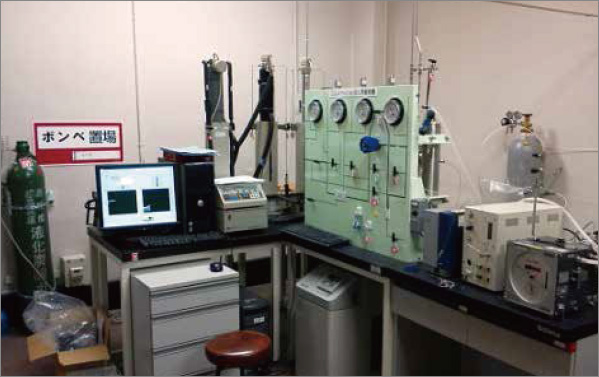 Experimental apparatus of C/W emulsion injection
Experimental apparatus of C/W emulsion injection
Molecular Catalysts Technology
Energy Extraction from Ammonia
Ammonia is relatively easy to handle and acts as clean energy source because it generates only nitrogen and water when burned. If energy is stored as a form of ammonia, a new energy transportation system can be developed. Development of such system based on energy storage compounds enables the effective utilization of renewable resources, which are usually hard to be transported. Based on this concept, we aim to achieve interconversion of nitrogen and ammonia to develop novel energy transportation system.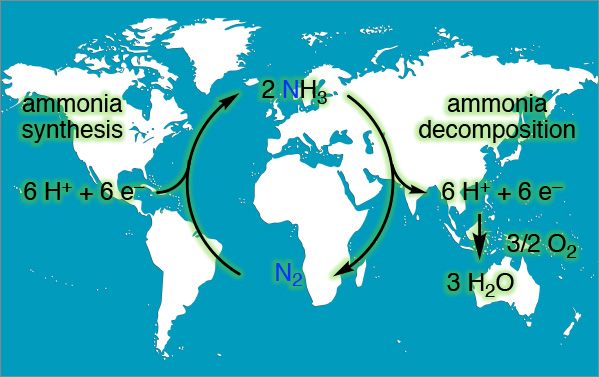 Ammonia Synthesis/Decomposition Cycle
Ammonia Synthesis/Decomposition Cycle
Development of Molecular Catalysts
To achieve efficient conversion of molecules such as ammonia and organic compounds, use of the appropriate catalyst is inevitable. Although various types of catalysts have been known to date, molecular catalysts, which are controlled precisely by modification of ligands, are attractive. Based on catalyst design, we can control chemical reactions including interconversion of ammonia and nitrogen.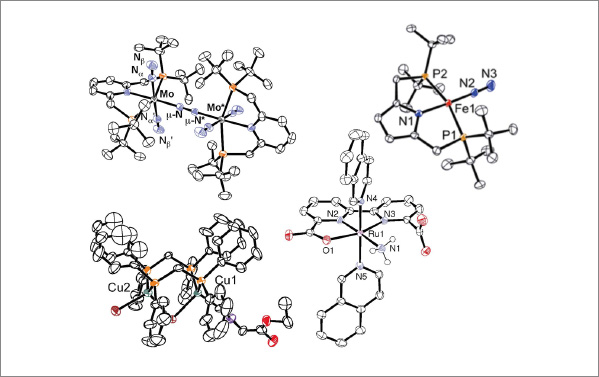 Catalysts developed by our group
Catalysts developed by our group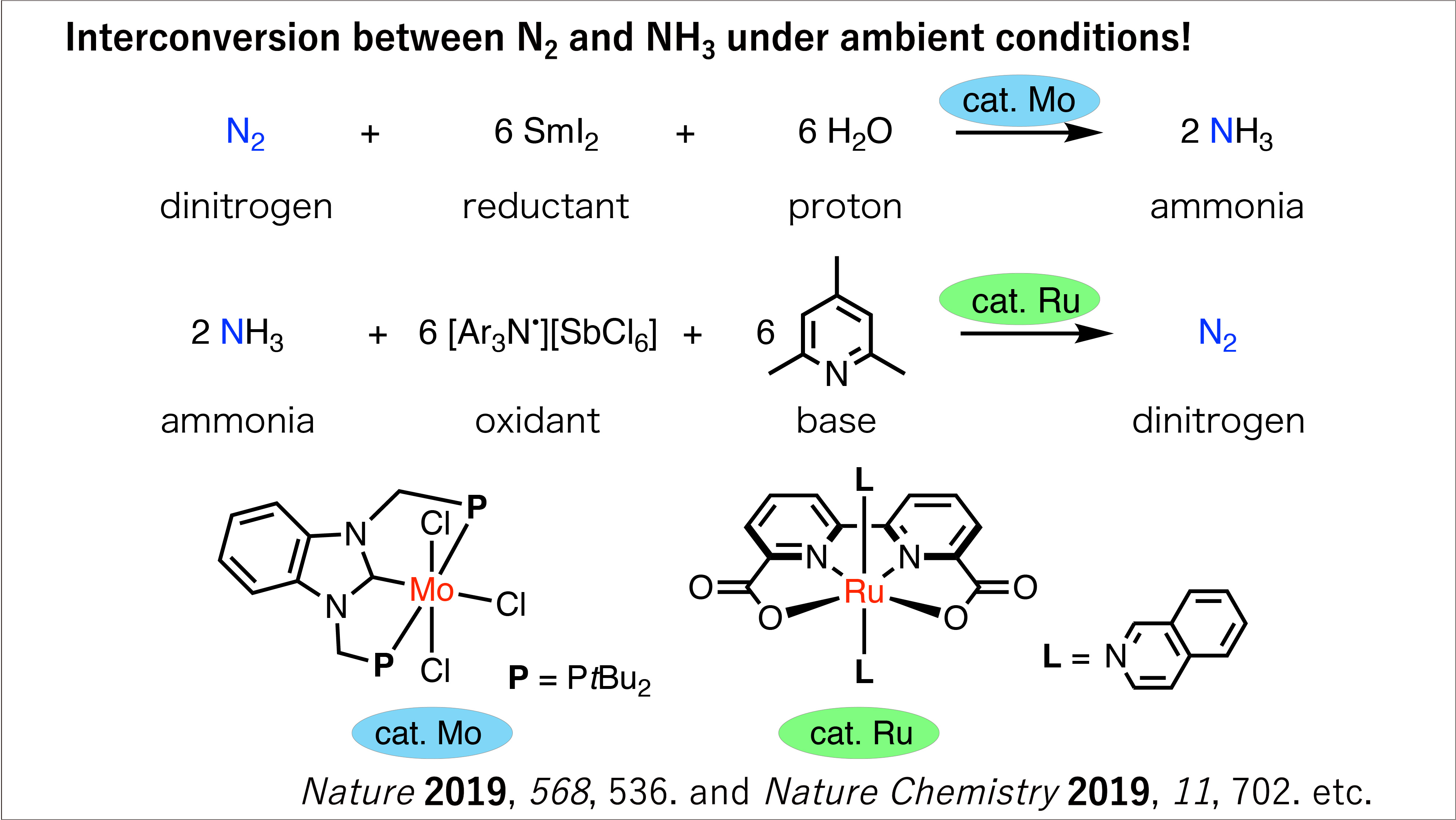 Examples of Achievements
Examples of Achievements







